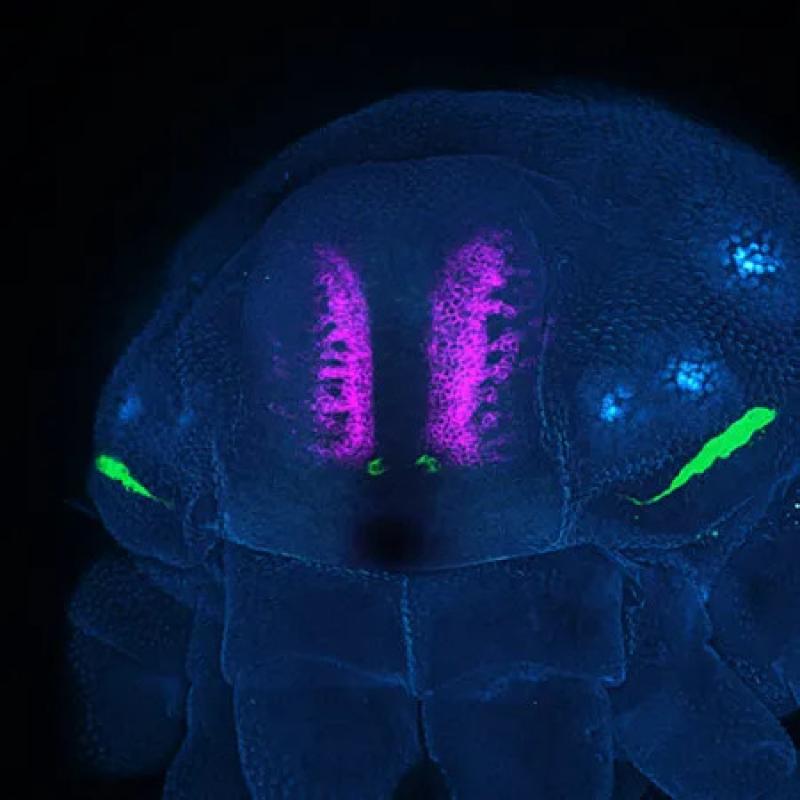Daddy longlegs look like they have two eyes. That doesn’t count the hidden ones


Two sets of vestigial eyes shed light on the arachnids’ evolutionary history

Truth to tell... this seed is just an excuse for posting a very cool macro photo of a spider. That's always worth doing.


The four extra eyes — leftovers of evolution — shed light on the evolutionary history of daddy longlegs.
A species of daddy longlegs has been hiding four extra eyes. While the newfound peepers never fully develop, the vestigial organs suggest that this arachnid lineage is about 50 million years older than previously thought, researchers report February 23 in Current Biology .
Unlike spiders, which can have as many as eight eyes, the roughly 6,500 species of daddy longlegs have two eyes at most. But a 2014 study described a fossil of an extinct four-eyed daddy longlegs ( SN: 9/19/14 ).
So developmental biologist Guilherme Gainett, then at the University of Wisconsin–Madison, and colleagues examined vision-related genes and proteins in Phalangium opilio embryos. In addition to the pair of front-facing eyes that the species is born with, certain eye proteins suggest that the embryos have two more pairs: another set of front-facing eyes and a set on the side of the head.
“There’s no lens or any external indication that they are there,” says Gainett, now at Boston Children’s Hospital. But checking for molecular building blocks of vision showed where the arachnid’s ancestors once had eyes.
Another species (Iporangaia pustulosa) also has vestigial eyes on the side of the head, the team found, hinting that all living daddy longlegs might have them. By examining where the trait pops up throughout daddy longlegs’ evolutionary history, the team estimates that the group’s last common ancestor lived roughly 537 million years ago, predating a previous estimate by about 50 million years.
These arachnids may use the underdeveloped eyes to maintain circadian rhythms or detect changes in light intensity, Gainett says. “It just opens a door for investigating the function of these leftovers of evolution.”







In fact, just about any tiny animal makes a good macro photo...
Daddy long legs …. The assassins of the spider world ….
A guy's gotta eat...
Very cool article. I believe that you said you lived in the SW, Outis. In Southern California close to Temecula if you go onto the desert roads at night/evening you'll see hundreds of tarantulas hopping across the road, it's quite a sight.